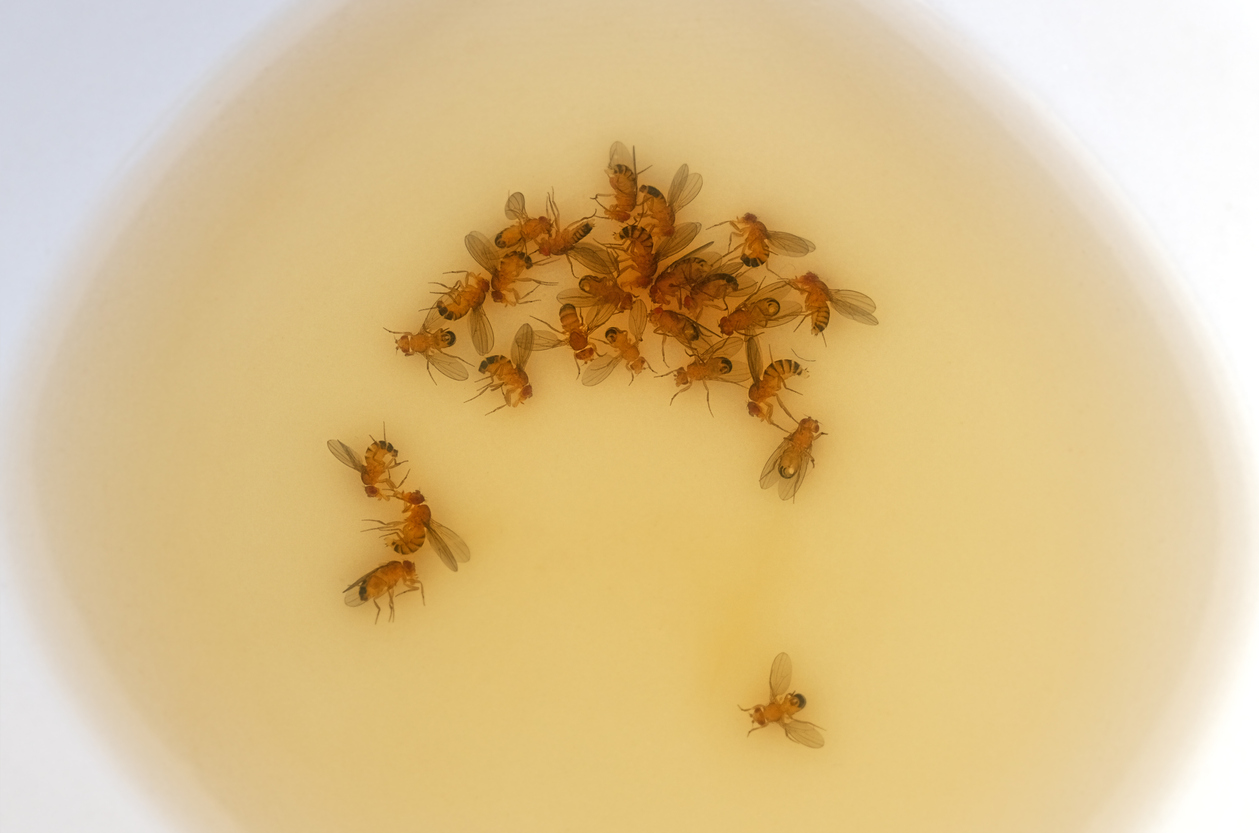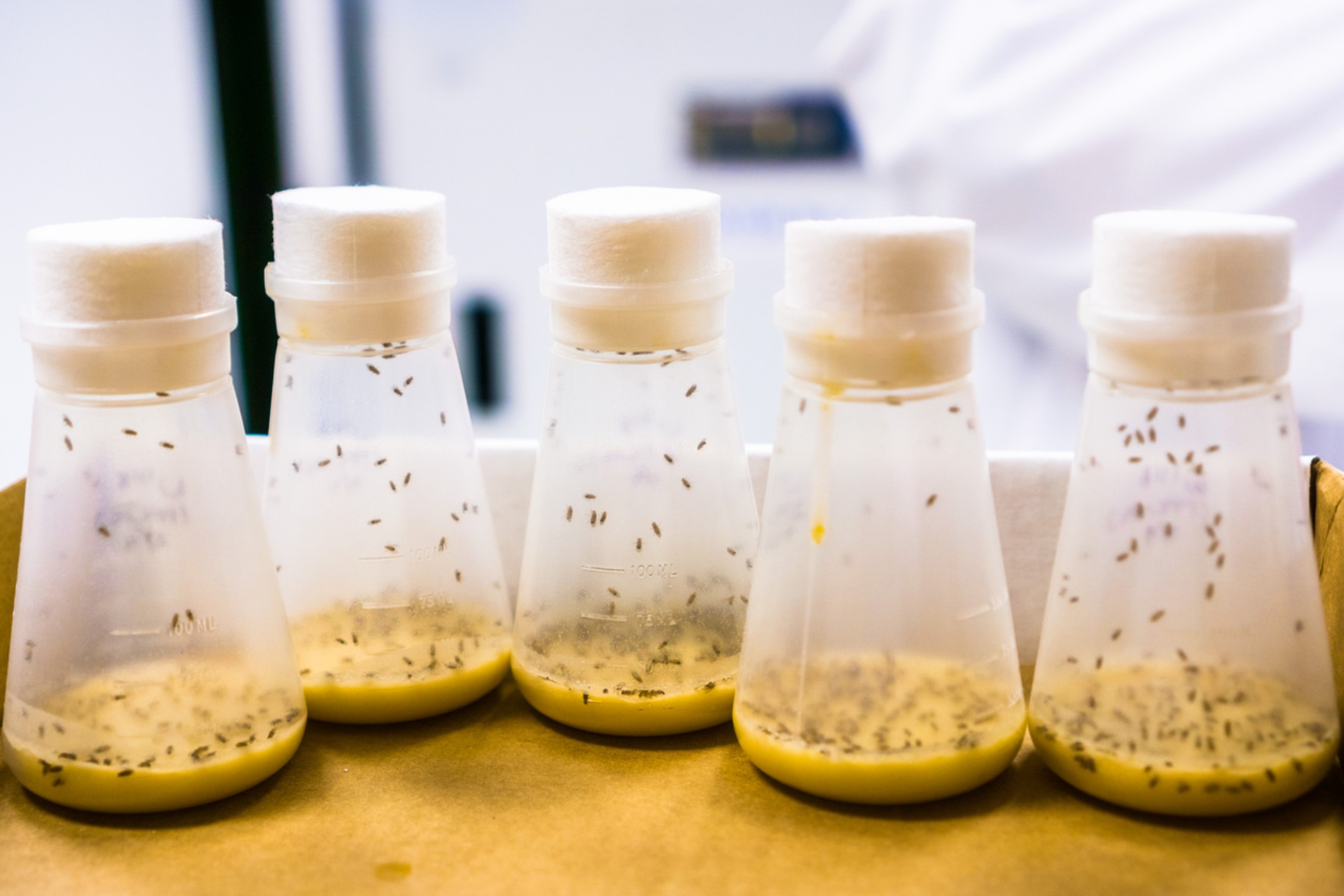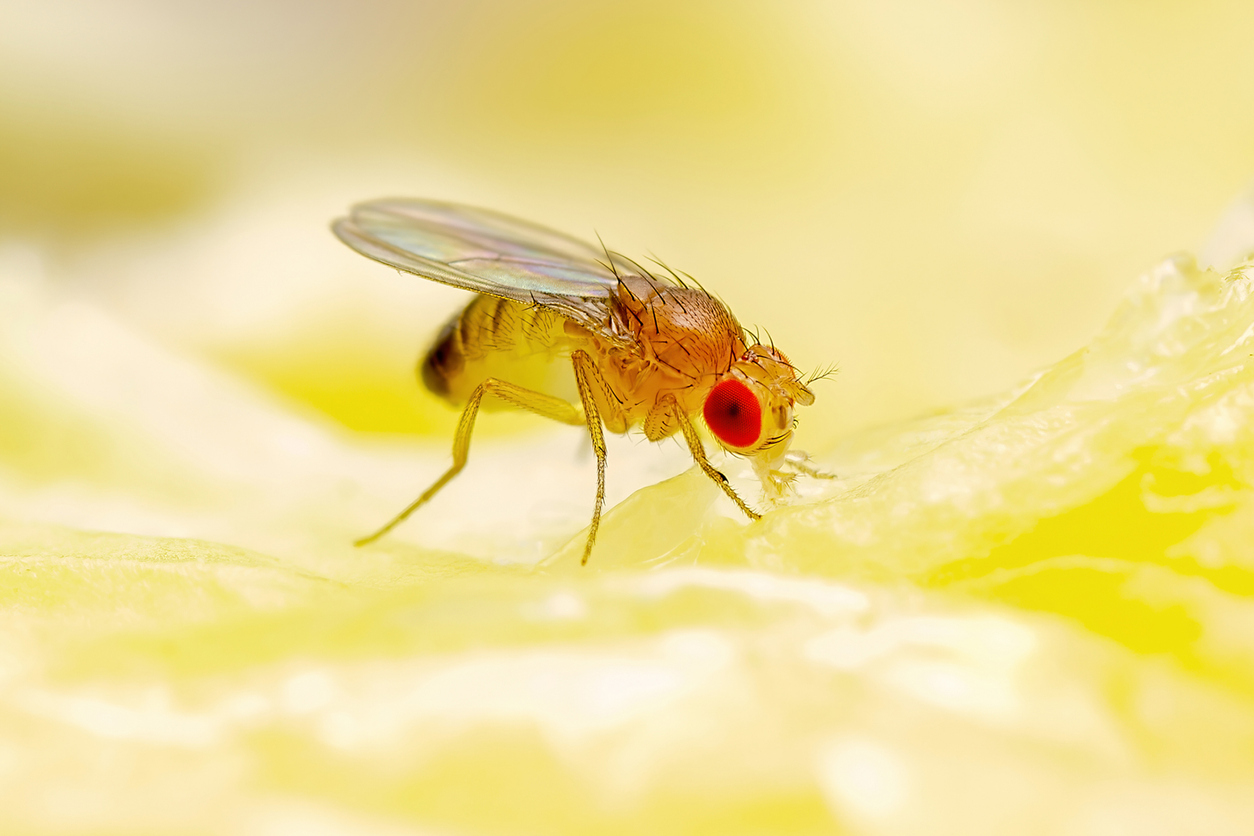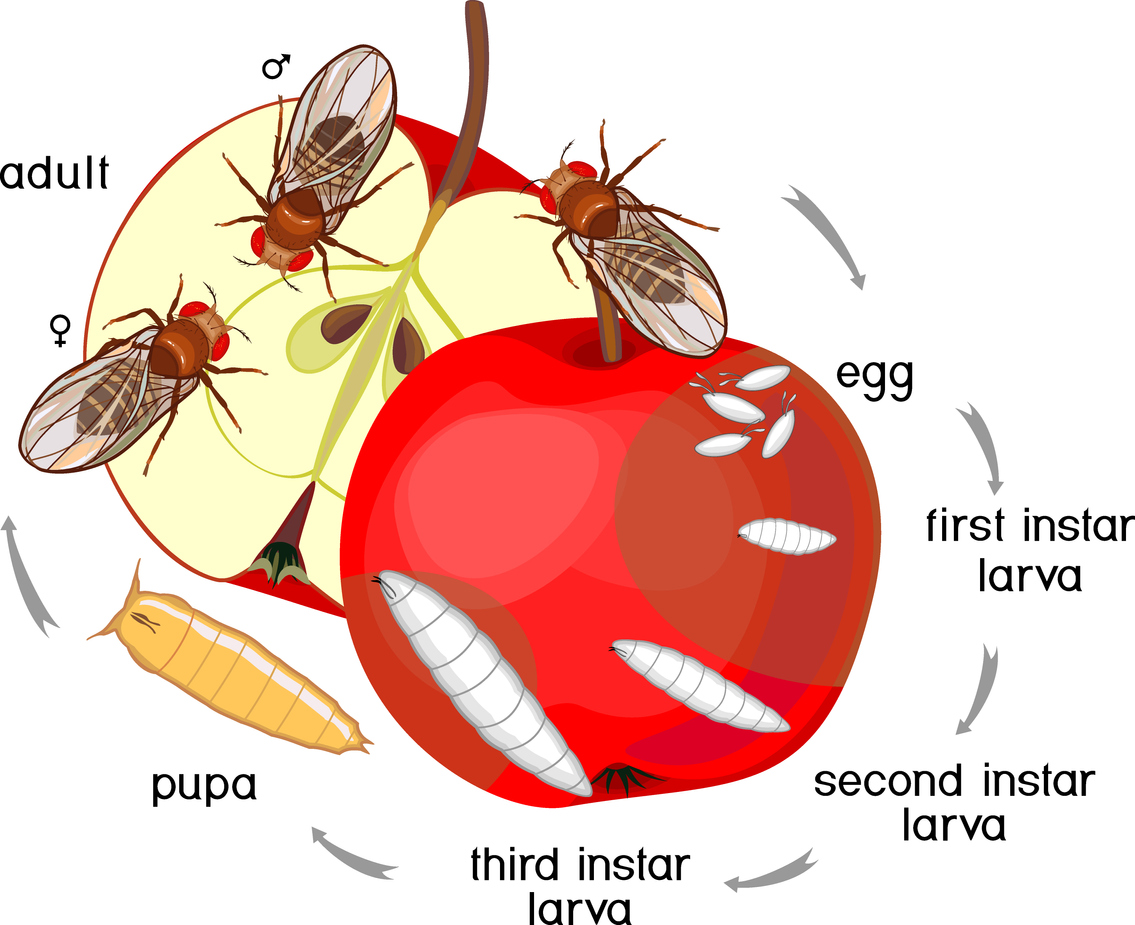Every person has to learn how to get rid of fruit flies at some point. These small, red-eyed gnats rarely travel alone and frequently arrive out of nowhere. If you don’t take action immediately, you’ll soon find yourself battling to regain control of your kitchen countertops and sharing the contents of your fruit bowl with hundreds of uninvited guests. Here are some tips to get rid of fruit flies in your home:
1. Throw out overripe produce – Throwing away fruit is the first step in removing fruit flies because they may have placed their eggs on overripe or rotten food. Inspect every piece of produce for rot, decay, and overripeness. Fruit fly larvae tunnel through produce to feed.
2. Clean and clear – You might want to take the garbage out more frequently since fruit flies might lay eggs in your rubbish bin, especially if it contains rotting vegetation. Clean all countertops entirely. As much as you can, keep food residue and food particles out of sink drains. If you don’t, fruit flies will have the ideal breeding ground in these places.

3. Use apple cider vinegar – Add a few drops of dish soap to a small bowl of apple cider vinegar. It would smell like fermenting fruit so that it would catch the attention of the fruit flies. To make the vinegar smell stronger, microwave the mixture for about 20 seconds. After that, put the bowl somewhere where there are lots of flies. The aroma will entice the insects, and because the dish soap lowers the liquid’s surface tension, they will become trapped and drown in the mixture. In a few hours, you’ll start to see progress. When the solution begins to get saturated with dead flies, dump it and refill it.

4. Create a DIY trap using a beer, wine, or fruit juice bottle – Another common DIY solution is to catch the flies in a bottle; a bottle of beer, fruit juice, or wine with a little leftover liquid works nicely. Put a tight lid over the bottle’s opening, then pierce several tiny holes in the top. The rancid beverage will draw them in, but they will struggle to escape once they are in and will eventually perish.
5. Use chemical fly sprays – To get rid of fruit flies permanently, choose top-rated items you can choose from one of these top brands, available in the UK, that offer fly sprays and can be bought on Amazon:
- PFERDEPFLEGE24
- RepellShield
- Sanmex
- KRISP
- SuperGift.com
- Natural Home Solutions
- Generic
- Pest Shield
- Raid
6. Hire an exterminator – If you don’t have time to create traps or chase flies with spray, you should hire an exterminator. Although hiring a good pest control company such as Merlin Environmental guarantees success, it’s cheaper to solve small-scale problems yourself. Merlin specialises in helping businesses and always aims to use non-toxic methods whenever possible to ensure the safety of your employees and customers.
What are fruit flies?
Fruit flies are frequently observed hovering above the fruit dish or around the sink. Throughout the summer, the small bugs are a frequent sight in our kitchens.
The flies, also known as vinegar and banana flies, are well-known for being a nuisance because they may invade our houses quickly. Fruit flies, as the name suggests, are drawn to fruits and vegetables that are left out in kitchens.
Fruit flies never develop chewing mouthparts as adults. Their sponge-like mouthparts suck up semi-liquid food and use saliva to turn solids into liquids.
How to get rid of fruit flies fast?
It would be great if you could get rid of fruit flies in a matter of minutes, but sadly, eradicating an infestation will require a bit of time, especially if you go the DIY route.
Using a fly swatter with a fine-mesh surface or spraying them with isopropyl alcohol will kill the flies you can see relatively quickly. However, if you don’t have a fine mesh swatter, it might take time to buy one, and you may not want to spray isopropyl around your fruit bowl.
So perhaps the fastest way to get rid of fruit flies is to use traps, as we outlined earlier in the post, or give Merlin Environmental a call.
What causes fruit flies?
Analysts claim that part of the explanation for their seeming recent migration to houses is the rise in kitchen compost bins used to recycle food leftovers. A recent resurgence of indoor plants has also bolstered the increase in their presence.
Flies are drawn to rotting apples in particular, but they can also be attracted to ripe fruit and vegetables and the remnants of liquid beverages like beer or soft drinks. Fruit flies lay their eggs in moist, organic materials or fermenting foods. When their countless larvae hatch, they sustain themselves by eating the foods.

Fruit flies feeding on a rotten peach
What do fruit flies look like?
Fruit flies are very tiny, measuring only 3mm. Their thorax is a pale yellow/tan colour, while their abdomen is black on top and grey underneath.

Fruit flies have transparent wings and big red eyes. They move more slowly than most flies because their abdomen hangs low to the ground.
How long do fruit flies live?
Fruit flies are a pain to have in your home since they live a relatively short life, maturing from an egg to an adult in just 8 to 10 days, and they reproduce exceedingly quickly. Contrary to popular belief, fruit flies have a lifespan of more than 24 hours. Fruit flies have an average lifespan of 40 to 50 days.
How do you keep fruit flies away?
Eliminating sources of attraction is the best method to keep fruit flies from becoming a problem. Fruit and veg matured should be consumed immediately, thrown away, or refrigerated. If eggs or larvae are found in the cracked or damaged section of fruits or vegetables, the portion should be thrown away. New fruit flies can be hatched by a single abandoned rotting potato, onion, or spilt fruit juice under a refrigerator. The same applies to a compost container that is not regularly cleaned and emptied.
To prevent fruit flies from laying their eggs under the lid and hatching tiny larvae within the container, people who store fruits and vegetables or manufacture homemade ciders should make sure the containers containing fruit are tightly sealed and have not been left accessible to fruit flies at any point during the process.
To help stop adult fruit flies from entering from outside, windows and doors should be kept closed. This might be difficult to do during hot summer days, but if you don’t have any fermenting organic matter anywhere, then you can keep them open as they generally only come inside when there’s something there that they want.
Where do fruit flies come from?
Although fruit flies seem to invade your home out of nowhere, this is mostly because of how quickly they reproduce and grow. These flies frequently enter homes through windows, wall cracks, or even pre-laid eggs inside fruit at the grocery store or farm where the fruit originated.
Once inside your home, they can multiply with easy access to rotting vegetation.
How do fruit flies breed?
The surface of foods fermenting or other moist organic materials is where fruit flies lay their eggs. After emerging, the tiny larvae stay close to the surface of the fermenting material to feed and grow. Fruit flies have a huge capacity for reproduction; given a chance, they will lay roughly 400 eggs in their 8- to 10-day lifespan.
Ripe fruits and vegetables in the kitchen are particularly appealing to fruit flies. In addition, they will procreate in kitchen drains, compost bins, empty bottles and cans, rubbish bins, mops, and cleaning cloths. Larva only need a small amount of moist fermenting material to feed on.
In the illustration, you will see the four stages of the life cycle of fruit flies:

Why do fruit flies follow me?
The simple explanation is your scent. Fruit and sweet fragrances are very appealing to fruit flies. The majority of us utilise a range of personal hygiene items. The smell of sweet soap, perfume, lotion, or hair spray that you use may be the reason why fruit flies follow you. They will also approach you if they smell washing detergent or other additives on your clothing. Moisture and body heat also contribute to your attractiveness to fruit flies.
Why are fruit flies used in genetics?
| Eggs | The ripe fruit of a host plant is where the female adult fly lays her eggs. After a few days, the eggs develop into larvae. Fruit fly eggs are tiny and undetectable by the human eye. A female fruit fly may produce 400 or more eggs in her lifespan. |
| Larvae | From the eggs, larvae (maggots) emerge to feed through the soft fruit surface. The fruit rots internally as a result of maggot activity and bacteria. If you cut open a piece of fruit, you would probably find a fruit fly larva, which is the stage at which you would most likely be able to see it with the naked eye. |
| Pupae | Larvae that have reached maturity leave the fruit and tunnel into the ground to pupate. Larvae in the soil stop moving and develop into oval-shaped, light to dark brown, rigid pupae. The adult fly develops inside the pupal case, similar to a butterfly’s cocoon or chrysalis. |
| Adult | In the summer, it may take as little as seven days for the adult flies to emerge from the pupae, whereas in the winter, it may take many months. When the weather warms up, the flies emerge from their cocoons. It searches for the food required to mature, reproduce, and lay eggs. Adult flies are what we commonly find hovering around fruit bowls in our kitchens. |
Drosophila melanogaster, sometimes referred to as the fruit fly or vinegar fly, was first presented as a genetic model organism by T. H. Morgan more than a century ago. Researchers have advanced human health studies and gained a better understanding of several crucial biological mechanisms and processes thanks to fruit flies.
For almost every fly gene, very advanced and effective genetic and experimental techniques readily available (e.g., mutations, transgenic flies, antibodies to find their gene products) greatly accelerate Drosophila research. Because they are small, it is simple to examine complete fly embryos or tissues under a microscope in huge quantities and at great resolution.
Because of their shared evolutionary history, flies and humans exhibit extraordinary parallels in their genes, cells, tissues, and the biological mechanisms behind their growth, well-being, and sickness. Flies are not little humans, yet they can be used to study 75% of human disease genes. This frequently inspires and greatly expedites research on these genes in mice or even humans.
To illustrate how Drosophila is currently employed in research, we can refer to the research conducted by Andreas Prokop from the University of Manchester. She studied the growth and upkeep of the nervous system through fruit flies. The Biotechnology and Biological Sciences Research Council funded the study.

